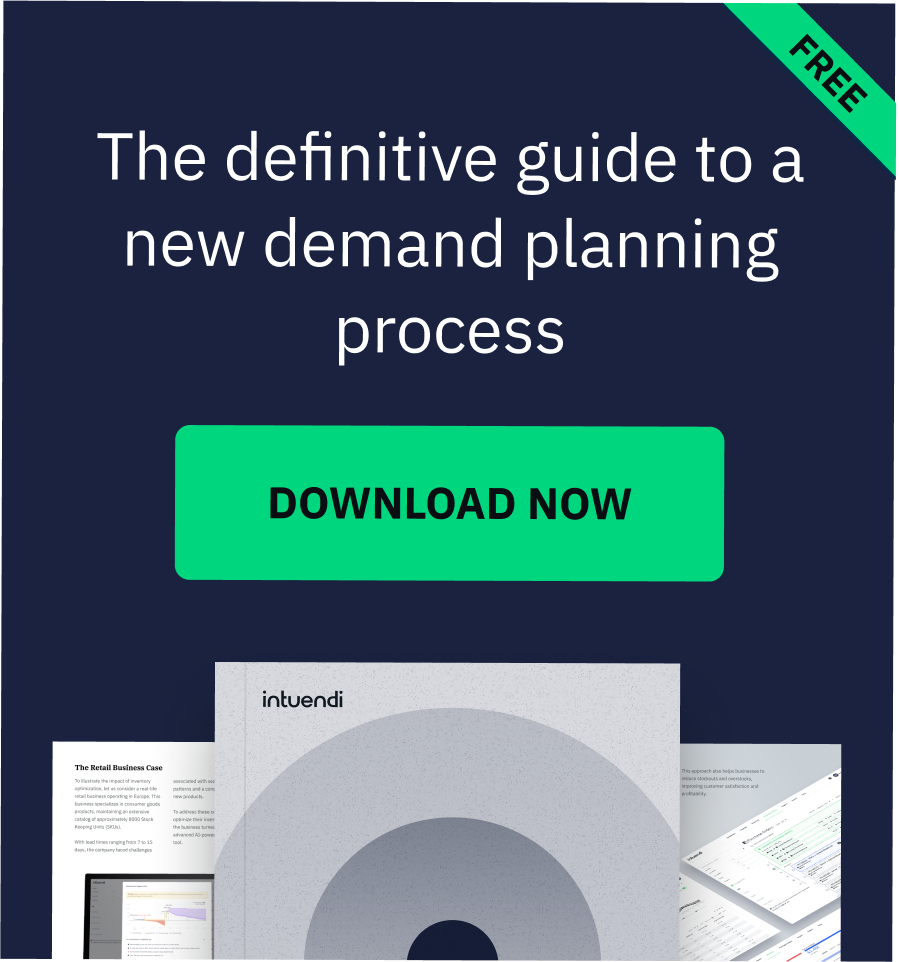Supply Chain Management (SCM) software encompasses a suite of tools designed to manage, track, and optimize the end-to-end flow of goods, information, and finances. From sourcing materials to delivering the final product to consumers, SCM software is designed to do it all. Key functionalities typically include demand planning, procurement, inventory management, logistics coordination, warehouse operations, and supplier relationship management.
In today’s fast-paced global marketplace, businesses need SCM solutions that are more innovative than ever before. Businesses are facing challenges like fluctuating demand, rising customer expectations for speed and transparency, and the need for cost control.
Effective SCM software addresses these challenges by providing visibility across the supply chain, automating routine tasks, enabling data-driven decisions, and ultimately improving efficiency, reducing operational costs, and optimizing overall performance. The main benefits of SCM software include minimized stockouts, lower inventory holding costs, improved delivery times, enhanced supplier collaboration, and greater resilience to disruptions.
Best Supply Chain Management Software
The market for SCM software is diverse, ranging from specialized tools focusing on specific functions to comprehensive enterprise platforms. Choosing the right SCM software depends heavily on individual business needs. Here’s an overview of some top contenders anticipated to lead the market into 2025, known for their strengths in optimizing supply chain operations:
Intuendi
Intuendi is an AI-powered demand forecasting and inventory optimization platform primarily focused on helping businesses prevent stockouts and reduce excess inventory. Intuendi’s key features revolve around machine learning algorithms that analyze historical data, seasonality, trends, and external factors to generate accurate forecasts. This drives automated replenishment suggestions.
Benefits
- Significantly reduces stockouts, improving sales and customer satisfaction
- Minimizes overstock, freeing up capital and reducing waste
- Enhances forecast accuracy and streamlines the ordering process
Pricing
- Typically offered as a SaaS (Software as a Service) subscription model
- Pricing depends on factors such as SKU count, number of locations, or usage volume
- Contact Intuendi directly for a customized quote
Target Users
- Well-suited for e-commerce businesses, retailers, and distributors
- Particularly valuable for SMEs seeking advanced forecasting capabilities without the complexity of larger enterprise systems
Unique Selling Points
- Strong emphasis on AI and machine learning for forecasting
- Ease of use
- Relatively quick implementation
Netstock
Netstock is a cloud-based inventory optimization solution designed to help businesses minimize stockouts, reduce excess inventory, and place optimal orders. It integrates tightly with ERP systems to pull relevant data. Key features include demand forecasting, inventory classification (e.g., ABC analysis), setting optimal safety stock levels, and generating recommended purchase orders.
Benefits
- Provides clear visibility into inventory health
- Helps achieve target fill rates
- Reduces working capital tied up in stock
- Improves planner productivity
Pricing
- Offered as a subscription model
- Often tiered based on inventory value or the number of SKUs being managed
Ideal Business Type
- Primarily targets small to medium-sized businesses (SMEs)
- Especially suited for distributors and manufacturers who rely heavily on ERP systems (such as NetSuite, Sage, SAP Business One, Microsoft Dynamics, etc.)
Advantages
- Strong focus on ERP integration
- User-friendly dashboards
- Actionable insights for inventory planners
StockIQ
StockIQ offers a comprehensive supply chain planning suite focused on demand planning, inventory optimization, replenishment, and supplier management. StockIQ’s core functionalities include statistical forecasting, promotion and event planning, calculating optimal inventory levels (considering lead times, service targets, etc.), and facilitating Sales & Operations Planning (S&OP).
Benefits
- Helps businesses balance inventory investment with customer service levels
- Prevents stockouts
- Reduces expediting costs
- Improves collaboration across departments
Pricing
- Typically requires contacting StockIQ for a custom quote
- Common for solutions offering broad capabilities tailored to specific needs
Industries Served
- Serves distributors, manufacturers, and retailers across various sectors
Integration Capabilities
- Designed to integrate with various ERP and business systems
- Enhances data flow and usability
Relex
Relex Solutions provides a unified platform for retail and supply chain planning, covering demand forecasting, replenishment, space planning, and workforce optimization. Relex’s strengths lie in using AI and machine learning for highly accurate forecasting and automated inventory management, particularly in complex retail environments with fresh products or high SKU counts.
Benefits
- Reduces spoilage (especially in grocery)
- Optimizes on-shelf availability
- Improves inventory turnover
- Enhances promotional planning accuracy
- Unifies planning processes
Pricing
- Enterprise-level solution
- Pricing is typically custom and based on scope and scale
Types of Businesses
- Best suited for larger retailers (especially grocery)
- Also ideal for CPG companies and distributors dealing with complex demand patterns and large assortments
Key Strengths
- Unified platform approach
- Advanced AI/ML capabilities
- Strong focus on the specific challenges of the retail sector
o9 Solutions
o9 Solutions offers an AI-powered platform, often referred to as the “Digital Brain,” for integrated business planning and decision-making across the supply chain. o9 Solutions’ main features include advanced demand forecasting, supply planning, S&OP, scenario modeling, and control tower visibility. It aims to break down silos between planning functions.
Benefits
- Enables faster, smarter decisions through end-to-end visibility and AI-driven insights
- Improves forecast accuracy
- Optimizes inventory and resource allocation
- Allows for robust scenario planning to navigate uncertainty
Pricing
- Enterprise-focused solution
- Pricing is custom based on the specific modules and scale of deployment
Industry Suitability:
- Suitable for large enterprises across various industries, including CPG, retail, manufacturing, and technology
- Designed for businesses requiring sophisticated, integrated planning capabilities
Competitive Advantages:
- Powerful AI engine
- Integrated platform architecture (“digital twin” concept)
- Strong analytics and scenario planning capabilities
Types of Supply Chain Management Software
Supply Chain Management software isn’t a one-size-fits-all solution — it comes in many different forms. Because modern supply chains are complex, covering everything from sourcing materials to final delivery, different software tools have evolved to specialize in specific areas. While some large platforms try to manage the entire process, many businesses choose a mix of specialized tools to create a system that fits their needs. Understanding these categories makes it easier to see how each type of software helps improve the flow of goods, information, and money.
- Enterprise Resource Planning (ERP) Systems: These are broad business management systems that often include SCM modules (like inventory, procurement, order management). They integrate data across different departments (finance, HR, operations), providing a foundational data source for SCM activities.
- Warehouse Management Systems (WMS): Focus specifically on optimizing warehouse operations – tracking inventory movement, managing receiving and put-away, optimizing picking and packing processes, coordinating shipping, and managing warehouse labor.
- Transportation Management Systems (TMS): Deal with the logistics of moving goods. Functionalities include route planning and optimization, carrier selection and management, freight auditing, load consolidation, and shipment tracking.
- Inventory Management Software: Specializes in managing stock levels. This includes demand forecasting, setting reorder points and safety stock, tracking inventory quantities and locations, managing stock valuation, and sometimes basic order processing. The tools reviewed earlier (Intuendi, Netstock, StockIQ) often fall heavily into this category, albeit with advanced optimization features.
- Procurement and Supplier Management Solutions: Streamline the purchasing process (from requisition to payment) and manage relationships with suppliers. Features can include supplier onboarding, performance tracking, contract management, e-sourcing, and spend analysis.
Top Features to Look for in SCM Software
Choosing a Supply Chain Management (SCM) software isn’t just about picking a vendor — it’s about finding the right capabilities to improve your operations. While every business has unique needs, certain core features have become essential for managing supply chains today. These features help businesses gain visibility, improve efficiency, stay agile, and make smarter, data-driven decisions. As you review your options, focus on solutions that offer the following key features:
- Real-time Tracking and Visibility: The ability to see inventory levels, shipment statuses, and potential disruptions across the supply chain as they happen. This enables proactive decision-making rather than reactive fixes.
- Automation and AI Integration: Automating routine tasks (like order generation) frees up staff for strategic work. AI and machine learning enhance forecasting accuracy, optimize inventory levels, predict disruptions, and suggest optimal actions.
- Cloud-Based vs. On-Premise: Cloud solutions offer scalability, accessibility from anywhere, and lower upfront infrastructure costs, with updates managed by the vendor. On-premise offers more direct control over data and systems but requires internal IT resources for maintenance and upgrades. The trend is strongly towards cloud-based SCM.
- Seamless Integration: The software must integrate smoothly with other critical business systems, especially ERP, but also potentially WMS, TMS, CRM, and e-commerce platforms. This ensures data consistency and avoids manual data entry errors.
- Scalability and Customization: The solution should be able to grow with your business (handle more users, SKUs, locations, transactions) and offer some level of customization to fit specific workflows or industry requirements without excessive complexity.
How to Choose the Right SCM Software for Your Business
Choosing the right Supply Chain Management (SCM) software is a big decision — and it’s about more than just comparing features. It’s about finding a partner and a solution that fits your operations today and supports your goals for the future.
Start with a self-assessment: What specific problems are you trying to solve? It could be stockouts, inefficient warehousing, high transportation costs, or poor visibility across your supply chain. Your business size and industry matter too — the needs of a growing SME are very different from those of a large multinational, and industries like retail, manufacturing, and logistics often need tailored solutions.
While cost is important, focusing only on price can be misleading. Instead, think about Return on Investment (ROI). Look at how each solution could help reduce inventory costs, improve order fulfillment, cut operational expenses, and boost customer satisfaction. Ask yourself: does the value it offers justify the full investment, including setup and training costs?
It’s also important to think about the long-term relationship with the software provider. Choose a vendor with a strong track record, good customer support, and solid training resources. Make sure the system can grow with your business as it evolves.
Ultimately, choosing the right SCM software is about making a smart, strategic investment — one that balances current needs with future growth, technical strength with ease of use, and cost with lasting value.






